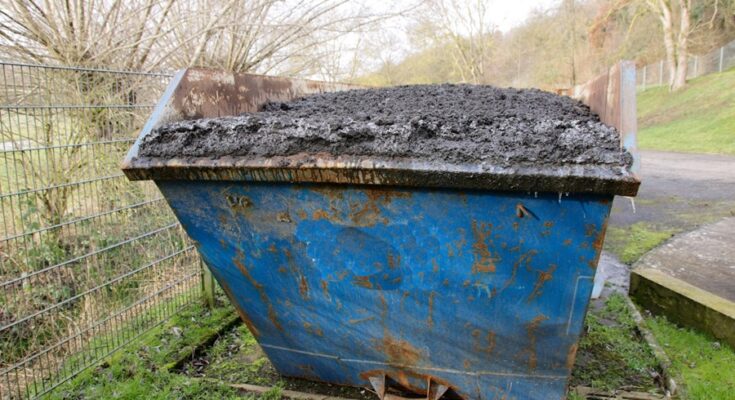Wastewater disposal is a critical component of water management, ensuring that used water is treated and safely returned to the environment. Various methods are employed to dispose of wastewater, each suited to different types of waste and local regulations. In this guide, we will explore the most common method of wastewater disposal and the role of a water waste disposal company in managing this process.
The Importance of Wastewater Disposal
Proper wastewater disposal is essential for protecting public health, preserving the environment, and ensuring the sustainability of water resources. Wastewater contains contaminants that can be harmful if not treated and disposed of correctly. These contaminants include organic matter, pathogens, chemicals, and heavy metals.
Common Methods of Wastewater Disposal
There are several methods for disposing of wastewater, but the most common method involves treatment and discharge into surface waters. This process is widely used due to its effectiveness in managing large volumes of wastewater.
Wastewater Treatment and Discharge
The primary method of wastewater disposal involves treating the wastewater to remove contaminants and then discharging it into surface waters, such as rivers, lakes, or oceans. This method ensures that the treated water is safe for the environment and public health.
Primary Treatment
Primary treatment is the first stage of wastewater treatment. It involves the physical removal of large particles and debris through screening and sedimentation. This stage helps reduce the load on subsequent treatment processes.
Steps in Primary Treatment:
- Screening: Removing large objects and debris.
- Sedimentation: Allowing solids to settle at the bottom of a sedimentation tank.
Secondary Treatment
Secondary treatment uses biological processes to break down organic matter in the wastewater. This stage involves aeration and biofiltration, where microorganisms consume organic pollutants, reducing their concentration in the water.
Steps in Secondary Treatment:
- Aeration: Introducing air to promote the growth of beneficial microorganisms.
- Biofiltration: Using filters to remove additional organic matter and suspended solids.
Tertiary Treatment
Tertiary treatment is an advanced stage that further purifies the wastewater, removing any remaining contaminants. This process can include chemical treatments, advanced filtration, and disinfection to ensure the water meets stringent quality standards before discharge.
Steps in Tertiary Treatment:
- Chemical Treatment: Using chemicals to remove specific contaminants.
- Advanced Filtration: Employing fine filters to capture small particles.
- Disinfection: Using chlorine, ozone, or ultraviolet light to kill pathogens.
Role of a Water Waste Disposal Company
A water waste disposal company plays a crucial role in managing the treatment and disposal of wastewater. These companies are responsible for operating and maintaining treatment facilities, ensuring compliance with environmental regulations, and protecting public health.
Collection and Transportation
Water waste disposal companies collect wastewater from residential, commercial, and industrial sources. They use a network of pipes and pumping stations to transport the wastewater to treatment facilities. Proper collection and transportation are essential for efficient wastewater management.
Treatment Facility Operation
These companies operate treatment facilities where wastewater undergoes primary, secondary, and tertiary treatment. They ensure that the treatment processes are efficient and effective, meeting all regulatory requirements for discharge.
Environmental Monitoring
Water waste disposal companies conduct regular environmental monitoring to ensure that treated wastewater meets safety standards. They test for various contaminants and report their findings to regulatory agencies, maintaining transparency and accountability.
Regulatory Compliance
Compliance with local, state, and federal regulations is a key responsibility of water waste disposal companies. They obtain necessary permits, adhere to discharge limits, and submit regular reports on their operations. This compliance ensures that wastewater disposal practices do not harm the environment or public health.
Alternatives to Traditional Disposal Methods
While treatment and discharge into surface waters are the most common methods of wastewater disposal, there are alternative methods that can be used in specific situations.
Land Application
Land application involves applying treated wastewater to the land for agricultural or landscaping purposes. This method can be beneficial in areas with limited water resources, as it provides an additional water source for irrigation.
Underground Injection
Underground injection involves injecting treated wastewater into deep underground wells. This method is used in areas where surface water discharge is not feasible. It requires careful monitoring to prevent groundwater contamination.
Recycling and Reuse
Recycling and reusing treated wastewater for industrial processes, irrigation, or even potable water supply is becoming increasingly popular. This method conserves water resources and reduces the demand on freshwater supplies.
Conclusion
The most common method of wastewater disposal involves treating the wastewater and discharging it into surface waters. This method is effective for managing large volumes of wastewater and ensuring that it meets safety standards. A water waste disposal company plays a vital role in this process, from collection and treatment to environmental monitoring and regulatory compliance.
By understanding the importance of proper wastewater disposal and the methods used, we can appreciate the efforts made to protect public health and the environment. Whether through traditional treatment and discharge or alternative methods, effective wastewater management is essential for a sustainable future.




